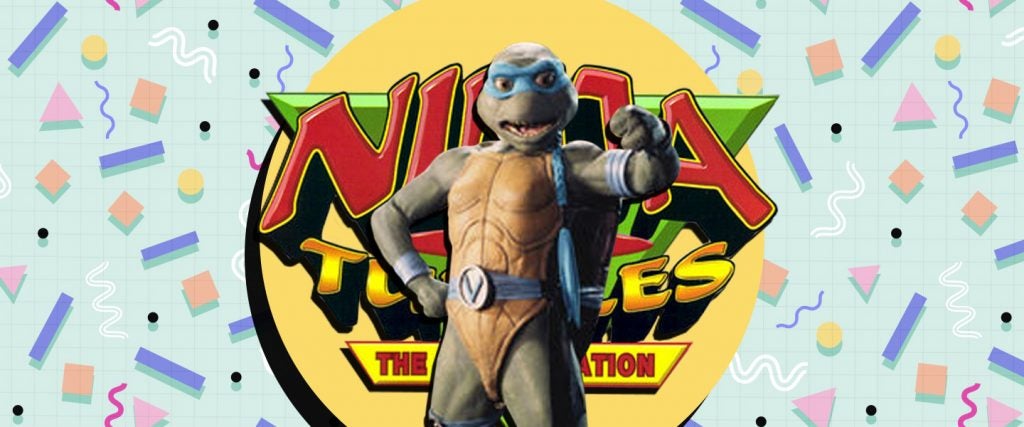2022 marks the 25th anniversary of the year that everything happened — 1997. It was an ear-biting, Pierce Brosnan-loving, comet-obsessed world, and we’re here to relive every minute of it. Twice a week over the next 12 months, we will take you back to the winter of sheep cloning and the summer of Con Air. Come for the Chumbawamba, and stay for the return of the Mack. See all of the stories here.
In the first 13 years of their existence, the Teenage Mutant Ninja Turtles had been through it all. In comic books, television and on the big screen, the Heroes in a Half Shell had thwarted countless plans for global domination, staved off more than one alien invasion and traveled through time and tangled with dinosaurs. They’d battled all manner of monsters and mutants and still came out of their adventures alive, joking around and wondering where their next slice of pizza would come from. Yet, in 1997, a new member of their team did what the evil Shredder never could — put an end to the Teenage Mutant Ninja Turtles.
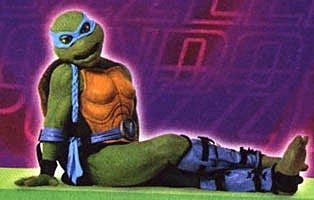
The new addition was a female Ninja Turtle named Venus De Milo, who hailed from China, had a braided, light blue bandana and, despite being a reptile, had a front shell that clearly depicted a pair of mammalian breasts. She joined the original four in the beginning of their second television show, Ninja Turtles: The Next Mutation, but although the addition of a fifth turtle wasn’t a new concept, Venus’ presence was met with scorn from fans and creators alike. Within the span of about a year, Next Mutation would be canceled, and Ninja Turtles action figures — once the best-selling toys in the country — would cease production for several years. Most tragically, the co-creators of the Teenage Mutant Ninja Turtles, Kevin Eastman and Peter Laird, would terminate their long-running partnership over the controversial addition.
Eastman and Laird met in the early 1980s as struggling artists in Dover, New Hampshire. “Kevin was the fun, party guy, and Peter was the business end of things,” said Ralph DiBernardo — owner of Jetpack Comics and a friend of Eastman and Laird’s at the time — when I interviewed him for the podcast Turtle Tracks. In 1984, Eastman and Laird were joking around one night when Eastman doodled an image of a turtle wielding nunchucks. Laird then reciprocated with a turtle drawing of his own, and before long, they developed the idea for the Teenage Mutant Ninja Turtles. The first issue of their comic — which they both wrote and drew together — came out later that year and was a smash hit on the indie comics scene.
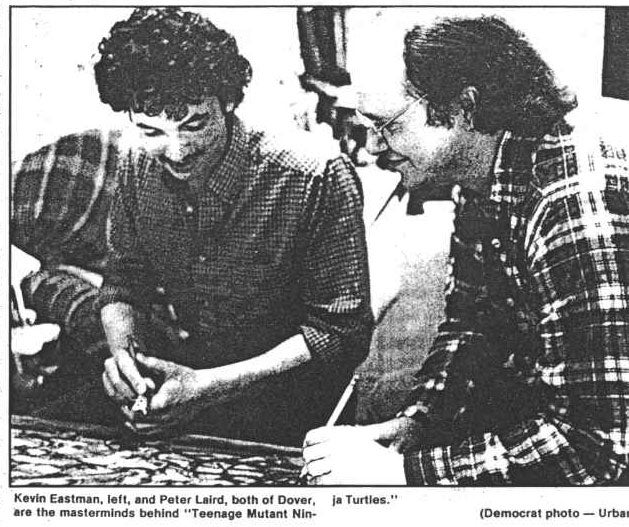
In 1986, after they had a few issues under their belt, Eastman and Laird were contacted by a marketing whiz named Mark Freedman who promised to bring the Ninja Turtles to the masses. He certainly delivered. In December 1987, the original Teenage Mutant Ninja Turtles cartoon debuted, and in the summer of 1988, the toy line hit shelves. In March 1990, the first film debuted, which, for nearly a decade, would hold the record as the highest-grossing independent film in history.
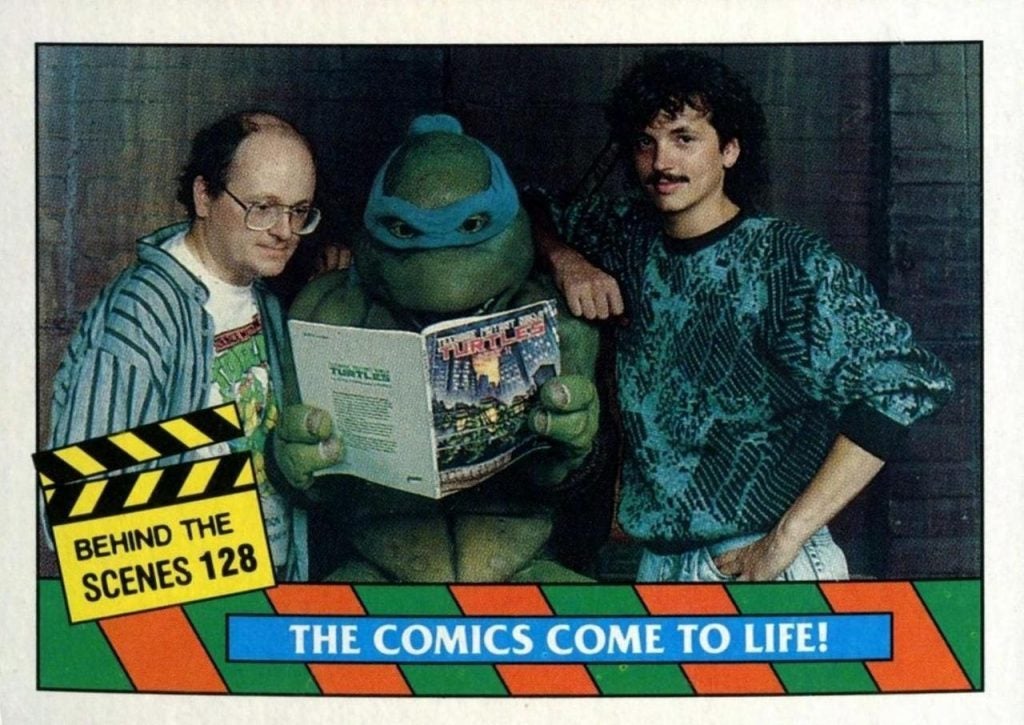
The movie put “Turtlemania” into full swing, and from 1990 until 1992, the Ninja Turtles were the hottest kids’ property on Earth. In addition to the cartoon, the toys and the film — which spawned two immediate sequels — the Turtles were on just about every piece of merchandise from lunchboxes to popsicles to every article of clothing. Hostess was selling green, sugar-coated miniature pies with the Turtles’ faces on the packaging, and Pizza Hut was sponsoring a nationwide tour where the Turtles sang onstage. At the center of it all were Eastman and Laird, who weren’t only trying to continue their original comic book series, but also were overseeing every bit of merchandise.
But long before the height of Turtlemania, Eastman and Laird’s relationship had begun to change. Back in 2015, when Laird was writing his personal blog, he recalled a time in 1987 — when the cartoon was first in production — that the amount of work forced him and Eastman to change the way they collaborated, as they began to work on alternating issues of the comic instead of doing them together. “We were under a lot of pressure, mostly related to the rapid expansion of Turtle business,” wrote Laird. “[Our original] way of working together just wasn’t feasible anymore. We never really had that level of collaboration again, and I missed it. I still do.”
Also, right from the start, there was the feeling that the cartoon series was getting away from them. Again, the duo worked closely together on the comic, but the cartoon was largely handled by others and only overseen by Eastman and Laird from a distance — and, as the cartoon progressed, they didn’t always like what they saw. For one, the original Ninja Turtles comics were darker and bloodier than anything that would appear in the kid-friendly cartoon. While Eastman and Laird were aware it would have to be watered-down, it was far sillier and more comedic than they would have liked, and the tone only lightened as the seasons went on (except at the very end when the cartoon suddenly darkened, but by that time, Turtlemania was long gone).
By 1993, however, the Teenage Mutant Ninja Turtles were in decline. The third film, which came out in March of 1993, failed to replicate the box-office success of the first two films, and the toy sales were declining as well. The cartoon — which, by the end of 1993, ran for 169 episodes — had run out of ideas, and would retool itself the next year. Also in 1993, the original Teenage Mutant Ninja Turtles comic book series ceased production with the “City at War” storyline. It would be Eastman and Laird’s last true collaboration, though the 2021 comic book series The Last Ronin was based on an old idea of theirs.
“In 1995, CBS announced they were canceling the show,” explains TMNT superfan Michele Ivey, and in November 1996, the last episode aired. “At that time, Eastman and Laird started to shop for other networks to pick up Teenage Mutant Ninja Turtles, but everyone turned them down besides Fox.” Fox also put some major stipulations on their offer, demanding that they do a live action show with Saban Entertainment, who were experiencing huge success at the time with Power Rangers.
They also wanted a fifth turtle to be added to the team, and it had to be female. “[Fox] basically said, ‘If you want to have a show, it will have a girl turtle, and if you don’t want to have a show, say ‘no’ to the girl turtle,’” Eastman told me during a podcast interview I conducted with him in 2019. Not liking the idea, Eastman and Laird refused and continued shopping around, but eventually, they came back to Fox. “They held off for a long time, but on January 11, 1997, they signed up to do the live-action show,” Ivey says.
Signing the deal came at a significant cost. “Next Mutation, that’s my fault,” Eastman joked during my interview. “A lot of people really don’t like that series. I, unfortunately, really do like that series for what it was, and what it was intended to be. We were developing a fourth Ninja Turtle movie, which never went ahead, which revolved around a fifth turtle named ‘Kirby.’ Fox changed it to a female turtle, [and] Pete refused to allow that to happen. Pete begrudgingly said, ‘You can go ahead with the series, but I don’t want any part of it.’”
On his blog in 2012, Laird shared some of his reasoning for stepping away, with the core issue being that there was a fifth turtle at all, not that the turtle was female. “The character of Venus de Milo, the female Turtle, epitomizes for me all that is stupid and shallow about Hollywood: In lieu of actually coming up with something new and different, something showing real creativity, one just has to say, ‘Hey, let’s do more of the same! If four Turtles are good, surely five would be even better!’” Laird wrote, while also noting, “The circumstances surrounding the inclusion of this character in the mercifully short-lived Ninja Turtles: The Next Mutation are also personally painful to me.”
In the Netflix series The Toys That Made Us, Laird stated that he and Eastman had been opposed to the “fifth turtle” idea since the beginning, and when Eastman finally went for it, he felt like it was a “betrayal.” Despite this, there had already been several “fifth turtles,” including the evil turtles Slash and Tokka, several throwaway alien turtles from the cartoon and the aforementioned Kirby, who Eastman and Laird were developing for the fourth film. There was even — for one issue in the kid-friendly Teenage Mutant Ninja Turtles Adventures comic book — a female turtle (at one point, the Turtles’ human friend April O’Neil was mutated into one of them).

So, if “fifth turtles” were nothing new in 1997, why was it enough to break up a friendship that had lasted for more than a decade? In reality, despite some considering Venus to be the “Yoko Ono” of the Teenage Mutant Ninja Turtles, she was merely the straw that broke the camel’s back. Eastman and Laird’s relationship had already mutated (sorry) years earlier when they decided to cease working on their comic together.
As for Venus, Laird wasn’t the only one who rejected the character. “I liked Venus, but fans didn’t,” Eastman told me. While forums for fans to complain in were still in their infancy in 1997, several voiced their disapproval for Venus by writing about it in the letters section of the comic series at the time (which neither Eastman nor Laird had much to do with). “I’m glad to hear that you’re not having any of this female turtle crap,” wrote one female fan before the show had even debuted. That fan felt the inclusion of a female turtle was pandering and unoriginal; others worried she’d disrupt the chemistry of the four brothers; and some didn’t like the name “Venus de Milo,” as it broke with the tradition of naming Ninja Turtles after artists. Once she debuted, too, her design was mocked for the inclusion of “Turtle boobs.”
While the negative feelings about Venus appear to have been the majority opinion among fans, hatred of Venus wasn’t universal. Ivey, who was on the internet in the early days of Ninja Turtles chat rooms, tells me, “I didn’t see this hate that everyone talks about. I saw fans quoting the show. I remember the search for the Venus toys. I saw a lot of love.”
For the most part though, many Ninja Turtles fans dismissed the idea of a female turtle before she even debuted, then continued to reject her during the show and mocked her long after it ended. As a result, some have speculated that there was an element of sexism surrounding the issue. But as Teenage Mutant Ninja Turtles artist — and lifelong TMNT fan — Ben Bishop argues, “There was nothing wrong with Venus being a female turtle. What was wrong was the show was terrible. It’s really tough to watch it. The suits don’t work well, the dialogue is very bad and everything is really close-up because they didn’t have any sets.”
Venus was also put in situations that were downright creepy, as the other Turtles were regularly hitting on her despite the fact that she was their sort-of sister. The show would go out of its way to establish that none of the Turtles were siblings, which was only seemingly done to allow for the Turtles to flirt with her and call her things like “a full-fledged mutant hottie.” As a bonus, they also made Venus Chinese, and did lots of jokes where she would misinterpret American words and customs.
For many reasons, Venus included, Ninja Turtles: The Next Mutation was canceled after one season. Afterwards, Eastman departed from the Ninja Turtles, leaving the property entirely to Laird. At the same time, the toy line ceased production and the next year, the comic series was canceled due to poor sales. As a property, The Teenage Mutant Ninja Turtles would remain dormant until 2003, when a new cartoon debuted with Laird overseeing things on his own. This “second wave” couldn’t compete with the first, but it was a successful relaunch of the brand, which eventually led to Viacom purchasing the property in 2009.
Over time, the issues surrounding Venus de Milo would fade into distant memory. Around 2014, during production of the documentary Turtle Power, Eastman and Laird would reunite after not having seen each other in years. DiBernardo, who held the gathering at Jetpack Comics, told me, “It had been a long time since they’d seen each other and there were hugs and handshakes. They sat next to each other during the event, and later on, they filmed a segment in front of where the house used to be where they first drew the Turtles.”
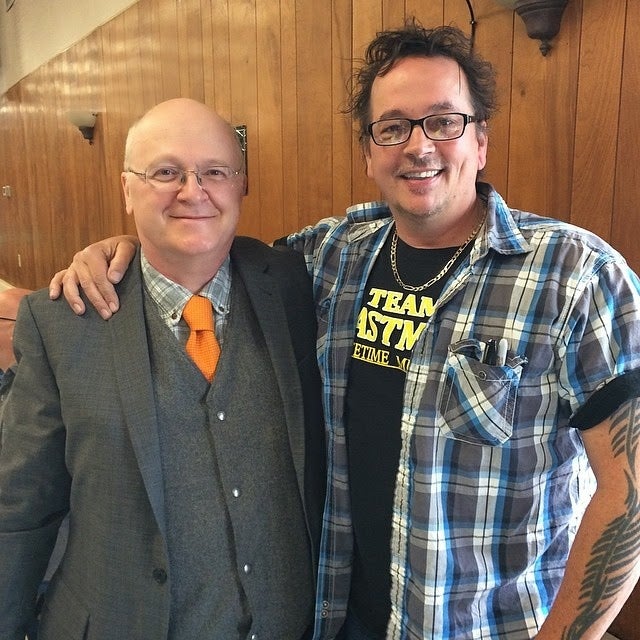
In the years since, many fans, including Bishop, have come to agree that Next Mutation was more of the problem than Venus was. “A few years ago, I was at North Carolina Comic-Con on the panel with Kevin Eastman and [TMNT writer] Tom Waltz. Someone from the audience asked, ‘What character would you bring into the IDW universe?’ and I said, ‘I can make Venus cool,’” says Bishop. To Bishop’s point, when a different female turtle, Jennika, joined the current comic book series in 2019, she was largely met with a positive reception.
It went so well, in fact, that the current creative team at IDW Comics — which has been publishing Ninja Turtles comics since 2011 — have decided to bring Venus back (presumably without her more problematic elements). Her return will happen at the end of this month in issue #127, which goes on sale March 30th.
Cowabunga, dudette!
